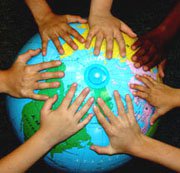 Judy Kaplan’s blog post last week “Big Questions Need Answers” about administrative guidelines for establishing school library programs led by certified school librarians struck a chord with readers across the country. Judy noted that, thanks to advocacy efforts, Vermont now has Education Quality Standards (EQS) that include guidelines for school library staffing and programs. She notes the EQS “reinforce a commitment to equitable student-centered learning.”
Judy Kaplan’s blog post last week “Big Questions Need Answers” about administrative guidelines for establishing school library programs led by certified school librarians struck a chord with readers across the country. Judy noted that, thanks to advocacy efforts, Vermont now has Education Quality Standards (EQS) that include guidelines for school library staffing and programs. She notes the EQS “reinforce a commitment to equitable student-centered learning.”
I have been traveling in the California where I began my career as a classroom teacher. For many years, this state has been at the bottom of the rankings for providing equal access to library resources. In fact, in the 2012-2013 academic year, California employed 804 school librarians, or one certified school librarian for every 7,784 students (Mongeau). Unconscionable!
In “How some California schools are overcoming school librarian shortages” written for EdSource: Highlighting Strategies for Student Success (May 2014), reporter Lillian Mongeau provides a snapshot of the uneven distribution of school librarians and libraries in the state’s public schools. The article includes quotes from classroom teachers and students who know the benefits of having a full-time professional school librarian facilitating learning in their school library. School librarians curate a collection of resources that affirms diversity and aligns with curricula. They know the reading interests of students and match them with engaging books and electronic resources. School librarians promote literature and literacy and provide access to information; they model and teach the behaviors of lifelong learning.
Mongeau also notes some compelling statistics that should convince decision-makers and voters to provide funding for school librarians (teacher librarians) in all California schools. Voters in San Francisco Unified School District (SFUSD) passed a Public Education Enrichment Fund (PEEF) in 2004 that provides funding for libraries, sports, fine arts, and other services to which all students should have access; the fund will be voted on again in November 2014. Since the funds have been available, all SFUSD schools libraries are staffed with librarians and children check out three times as many books as they did before the PEEF; the total number of books in circulation is over 1 million titles.
Across the Bay Bridge in Oakland, 56 out of 75 public school libraries are closed or are run by volunteers or part-time clerks rather than by professional librarians. About half of the libraries that are open are open less than 20 hours per week. Noted district librarian Ann Mayo Gallagher: “Currently (in Oakland), it’s possible to enter kindergarten and graduate high school never having gone to a school that has a library.”
Mongeau notes that some districts with a substantial property tax base such as Palo Alto have maintained professional librarians in their schools. Less affluent districts that are more dependent on state funds are currently formulating their PEEF plans for the next academic year. Research shows that the majority of children living in poverty do not have access to reading materials in their homes and do not live near public libraries and bookstores; school libraries help ameliorate this situation (Krashen, Syying, and McQuillan).
All children and youth deserve access to vibrant school library resources and programs. It is time to understand this unacceptable unequal state of affairs as a social justice issue.
Works Cited
Krashen, Stephen, Lee Syying, and Jeff McQuillan. “An Analysis of the PIRLS (2006) Data: Can the School Library Reduce the Effect of Poverty on Reading Achievement?.” CSLA Journal 34.1 (2010): 26-28. Print.
Mongeau, Lillian. “How some California schools are overcoming school librarian shortages.” EdSource: Highlighting Strategies for Student Success. 26 May 2014. Web. 2 June 2014. <http://tinyurl.com/CA-lib-staffing>.
Original Digital Image “Hands” from the Personal Collection of Judi Moreillon

PEEF sounds like a workable plan. The Arizona school system could use this idea.
PEEF sounds like a workable plan. The Arizona school system could use this idea.
The inequity issue among the haves and the have-not school idstricts is the elephant in the room of education, and also American society. I agree, it is a social justice issue, and we have to claim it, and call out for change. Thanks for illuminating the situation in California.
JK
The inequity issue among the haves and the have-not school idstricts is the elephant in the room of education, and also American society. I agree, it is a social justice issue, and we have to claim it, and call out for change. Thanks for illuminating the situation in California.
JK